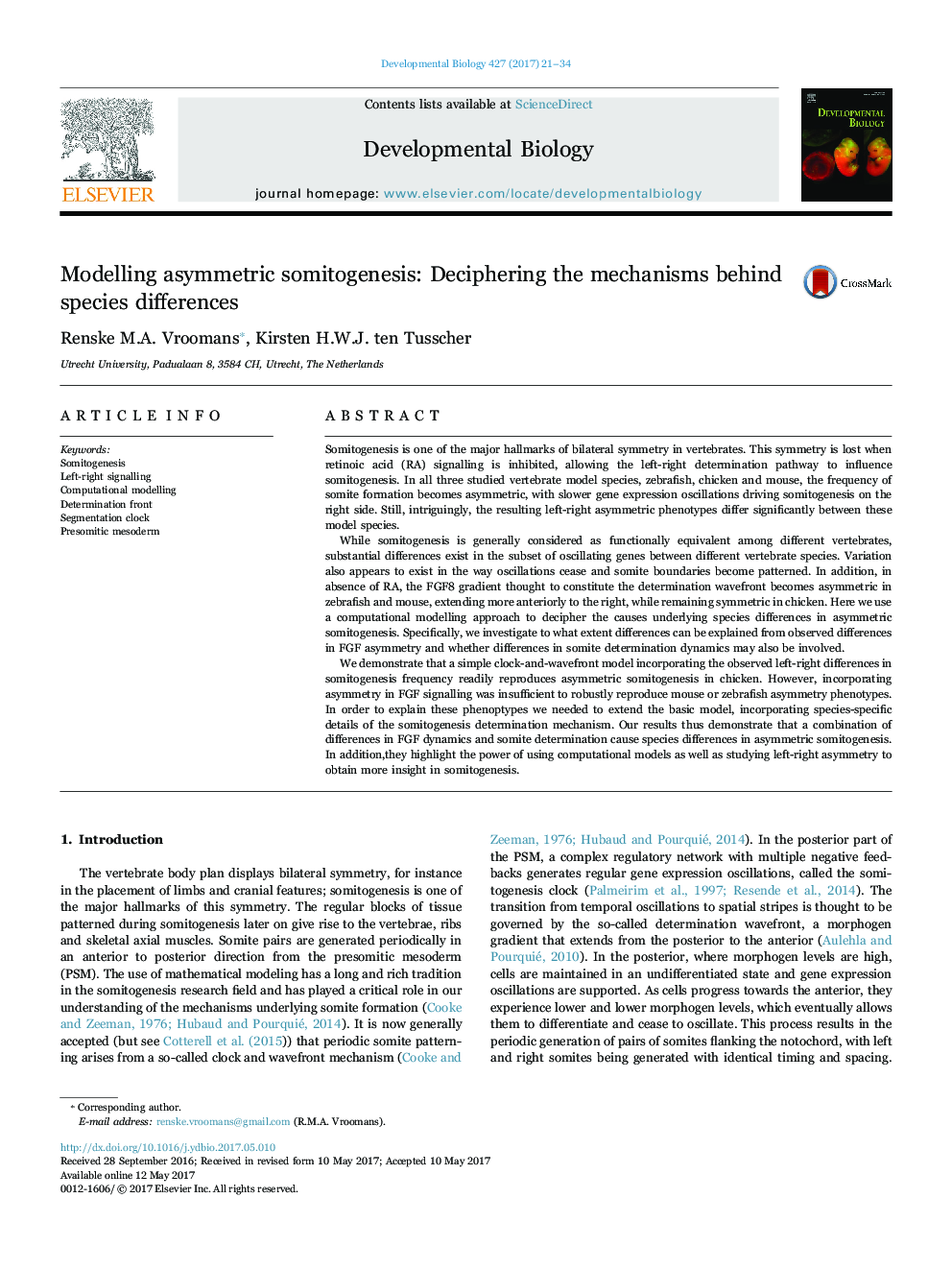| کد مقاله | کد نشریه | سال انتشار | مقاله انگلیسی | نسخه تمام متن |
|---|---|---|---|---|
| 5531664 | 1401806 | 2017 | 14 صفحه PDF | دانلود رایگان |
- We use simple models to study asymmetric somitogenesis in three vertebrate species.
- Differences in somite determination mechanism explain different asymmetric phenotypes.
- Thus, asymmetric somitogenesis provides insight into functional species differences.
Somitogenesis is one of the major hallmarks of bilateral symmetry in vertebrates. This symmetry is lost when retinoic acid (RA) signalling is inhibited, allowing the left-right determination pathway to influence somitogenesis. In all three studied vertebrate model species, zebrafish, chicken and mouse, the frequency of somite formation becomes asymmetric, with slower gene expression oscillations driving somitogenesis on the right side. Still, intriguingly, the resulting left-right asymmetric phenotypes differ significantly between these model species.While somitogenesis is generally considered as functionally equivalent among different vertebrates, substantial differences exist in the subset of oscillating genes between different vertebrate species. Variation also appears to exist in the way oscillations cease and somite boundaries become patterned. In addition, in absence of RA, the FGF8 gradient thought to constitute the determination wavefront becomes asymmetric in zebrafish and mouse, extending more anteriorly to the right, while remaining symmetric in chicken. Here we use a computational modelling approach to decipher the causes underlying species differences in asymmetric somitogenesis. Specifically, we investigate to what extent differences can be explained from observed differences in FGF asymmetry and whether differences in somite determination dynamics may also be involved.We demonstrate that a simple clock-and-wavefront model incorporating the observed left-right differences in somitogenesis frequency readily reproduces asymmetric somitogenesis in chicken. However, incorporating asymmetry in FGF signalling was insufficient to robustly reproduce mouse or zebrafish asymmetry phenotypes. In order to explain these phenoptypes we needed to extend the basic model, incorporating species-specific details of the somitogenesis determination mechanism. Our results thus demonstrate that a combination of differences in FGF dynamics and somite determination cause species differences in asymmetric somitogenesis. In addition,they highlight the power of using computational models as well as studying left-right asymmetry to obtain more insight in somitogenesis.
Journal: Developmental Biology - Volume 427, Issue 1, 1 July 2017, Pages 21-34
